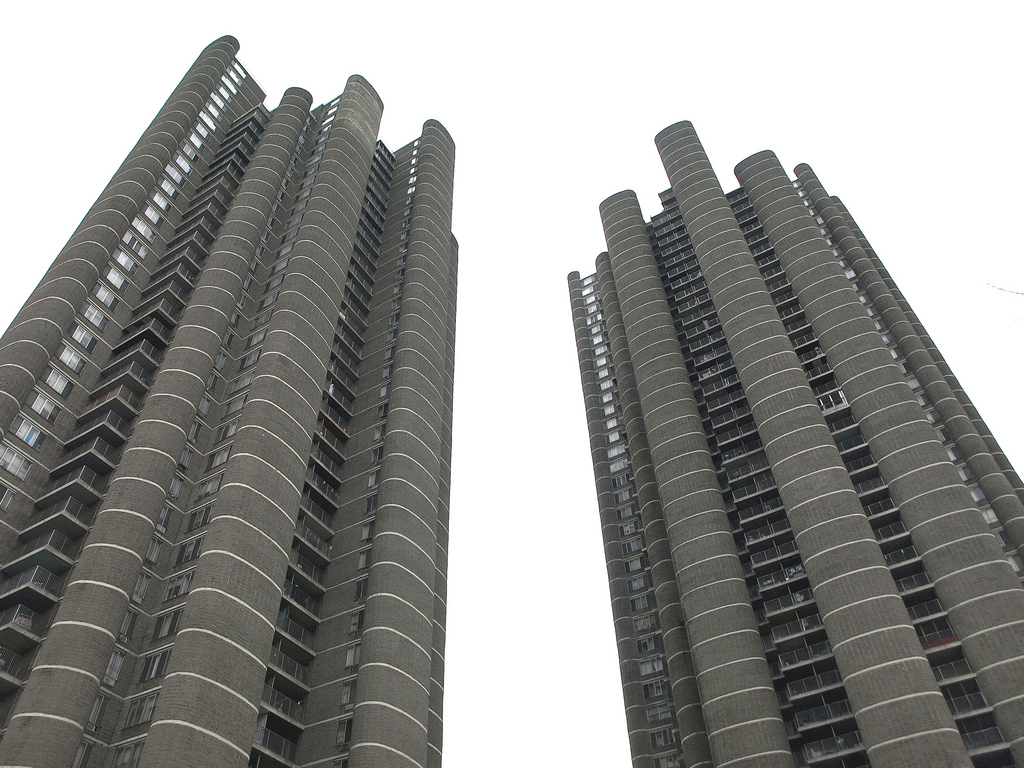TRACEY TOWERS
Credit: Flickr user jag9889.
TRACEY TOWERS
Date: 1972
Architect: Paul Rudolph
Address: 40 W Mosholu Pkwy S, Bronx
Use: Residential
Tracey Towers model
Among the tallest buildings in the Bronx, at 38 and 41 stories, Paul Rudolph’s Tracey Towers dominate the Bronx skyline – two concrete towers, comprised of nine narrow windowless cylindrical columns, rising straight up without setbacks. From a distance, the two towers appear impossibly complex and futuristic. But on closer inspection, the buildings are fairly ordinary, maybe not that surprising, considering how banal many of Rudolph’s housing towers turn out to be once you get past the jubilant volumetric expression of their massing.
Like its Bronx neighbor to the south, Morrisania Air Rights, Tracey Towers was created using air rights above an MTA train yard and maintenance shop, platforming over the site. The two towers are positioned at different elevations on the site due to the parking garage, maintenance shop and tracks below. The parking garage occupies a large portion of the building's base, creating a large concrete barrier, one story tall, that wraps around the entire complex, isolating the towers from the surrounding streetscape. Multiple curving car ramps – resembling those in Rudolph's government center in Boston – twist out of the towers, intersecting the sidewalks as they approach the street.
Tracey Towers was created through the Mitchell-Lama middle-income housing program, totaling 871 one, two, and three-bedroom affordable apartments. When it opened, Tracey Towers was the tallest in the Bronx – before Harlem River Park Towers claimed the title three years later –and are still the second-largest housing complex in the borough next to Co-Op City.
The towers were designed by famed architect and concrete pioneer Paul Rudolph, who had returned to private practice following six years as the chair of the Yale School of Architecture, where he designed the school’s Art & Architecture Building.
Over forty years later, Rudolph’s Towers harness a futuristic approach, setting them apart from the surrounding red brick tower in the park slabs that accounted for so many postwar housing developments in New York City. Close up, the towers take on a new texture; that of Rudolph’s signature corduroy concrete, also used in Rudolph’s Endo Pharmaceuticals Lab in Garden City. The towers’ facade and surrounding walls are all clad in thousands of these precast concrete blocks, delineated by white concrete floor slabs, which gently flow around its curves and crevices. The extruded cylinders appear structural, but are in fact purely aesthetic. Unlike Lincoln Plaza Towers by Horace Ginsbern & Associates, which opened a year after Tracey Towers, or the Corinthian Apartments which opened in 1987, (both in Manhattan and market rate) Rudolph chose to keep the windows and balconies flat and rectangular, lining the building’s core between these curving cylinders and straight walls.
Tracey Towers Floor plans
Some of the curves continue inside the building, creating a spectacular lobby with several levels connected by twisting ramps and stairwells. But while the number of entrances and pathways may be aesthetically pleasing, it has caused confusion among residents and visitors. As Fred Bernstein noted in his review, “it is impossible to know where to enter; ramps lead to more ramps, which lead to chain-link fences blocking access to the building’s labyrinthine public spaces. The lobby level is really half a dozen levels, interconnected in ways that even an architecture writer can’t suss out.” (Fred Bernstein, Oculus, 2005)
The 871 apartments in the towers have square floor plans, enlivened by the nine elliptical engaged columns that jut out from the sides of the building and rounded turret-like corners. These elements terminate at different heights to further cement the buildings’ mechanical, techno-futurist look. While the entry sequences and lobby levels maintain Rudolph’s trademark complexity, the residential levels themselves are quite traditional, with central elevator cores ringed by largely rectilinear apartments. They hardly register the buildings’ outward complexities by omitting the most interesting parts of the design – the curved elements – with interior right angles. While the buildings’ apartments may be lackluster, the towers themselves are still a great addition to the Bronx skyline and one of New York’s top examples of Rudolph’s signature brand of brutalism, corduroy and all.
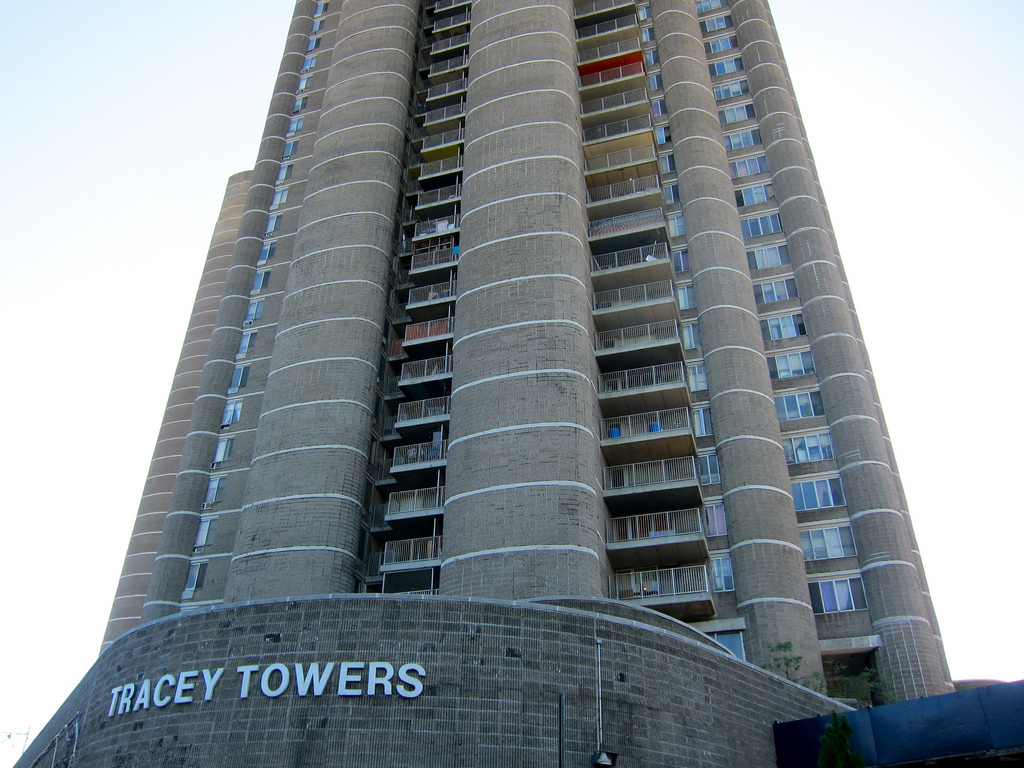
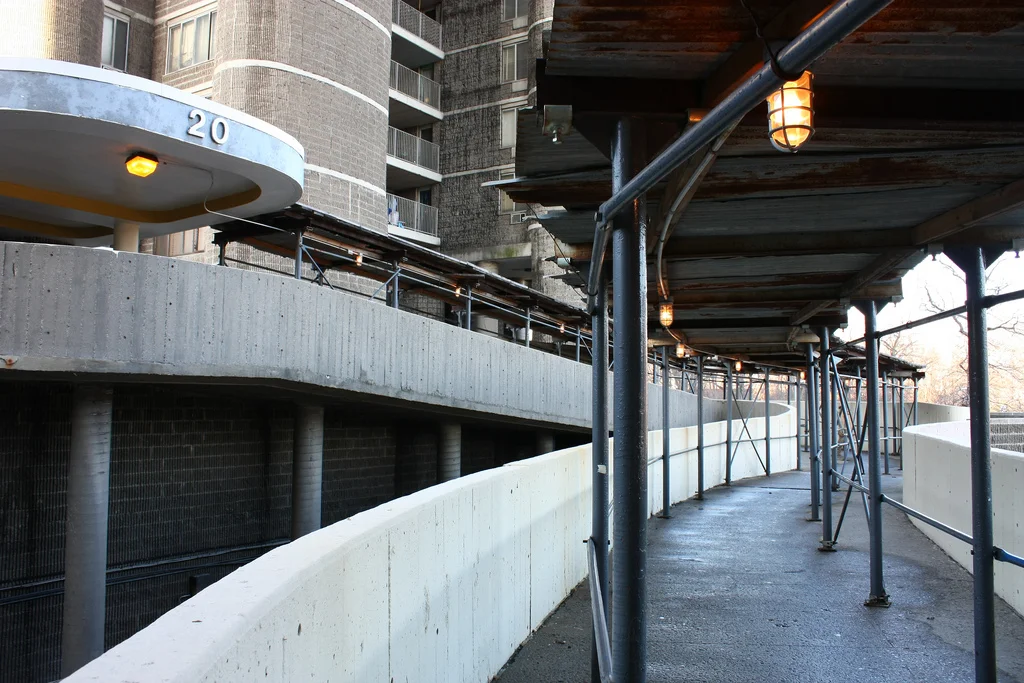
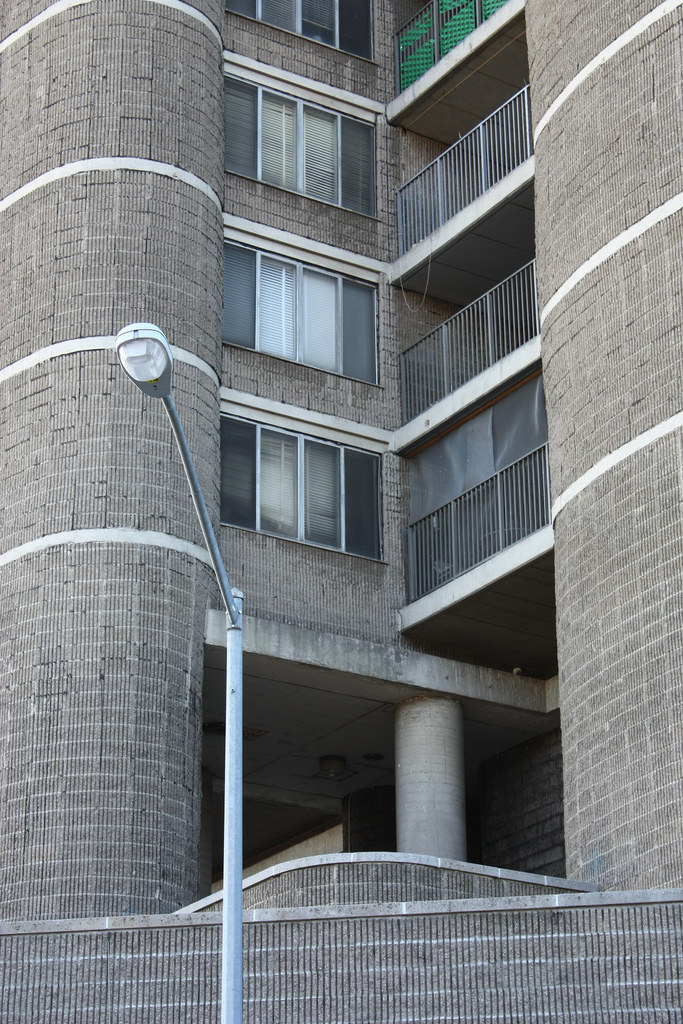
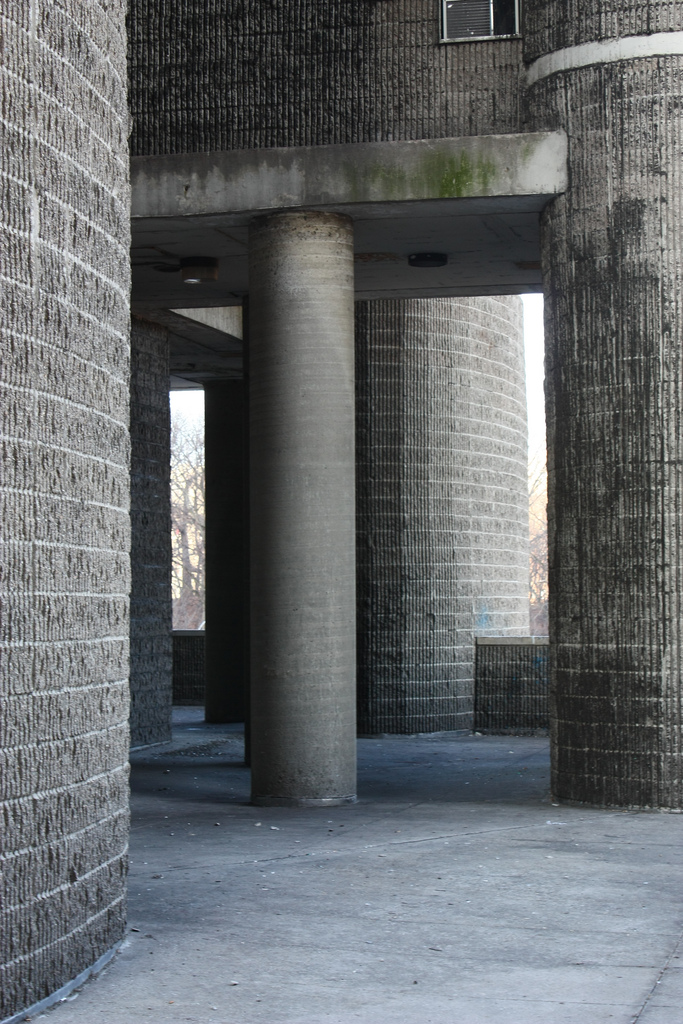
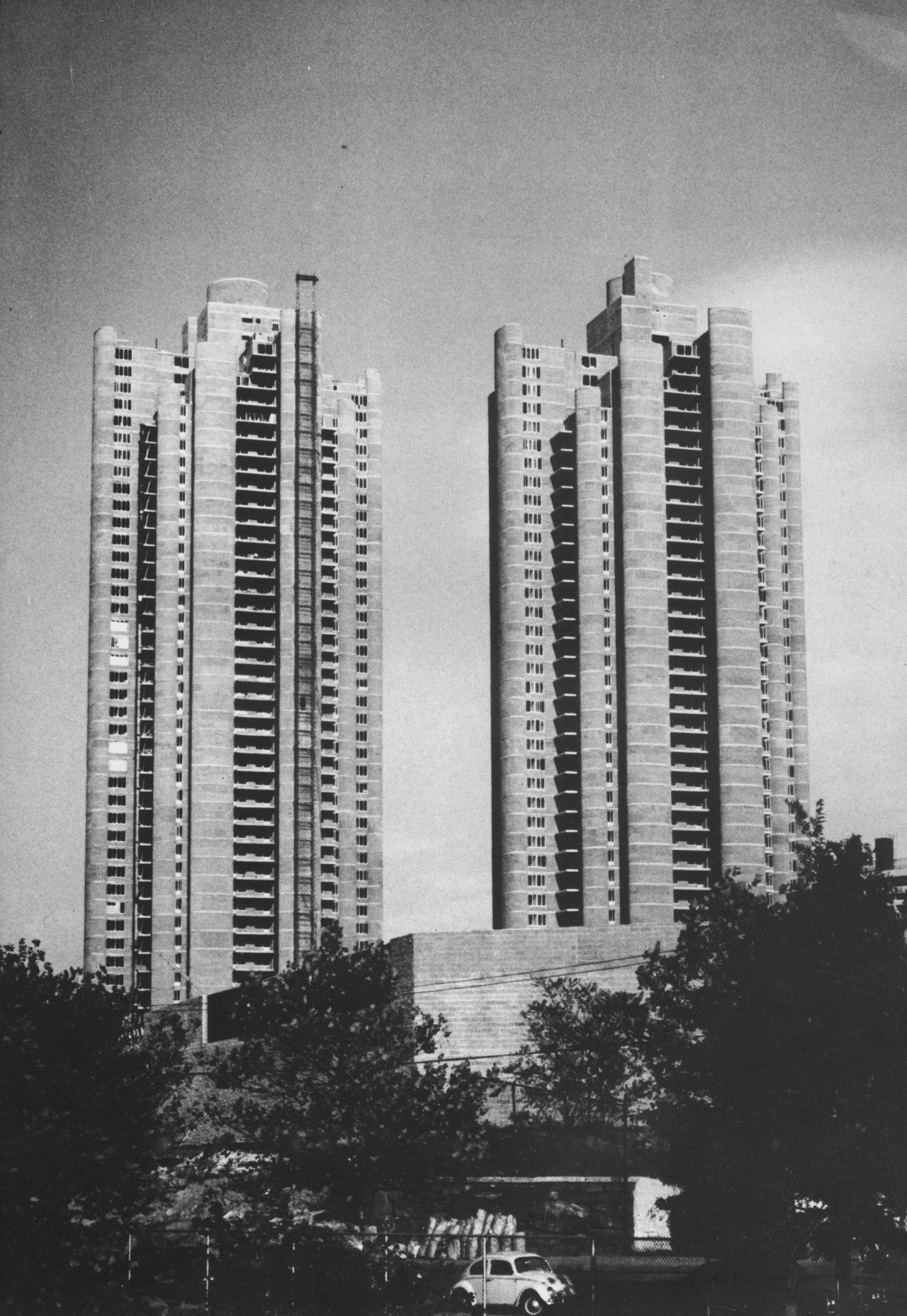
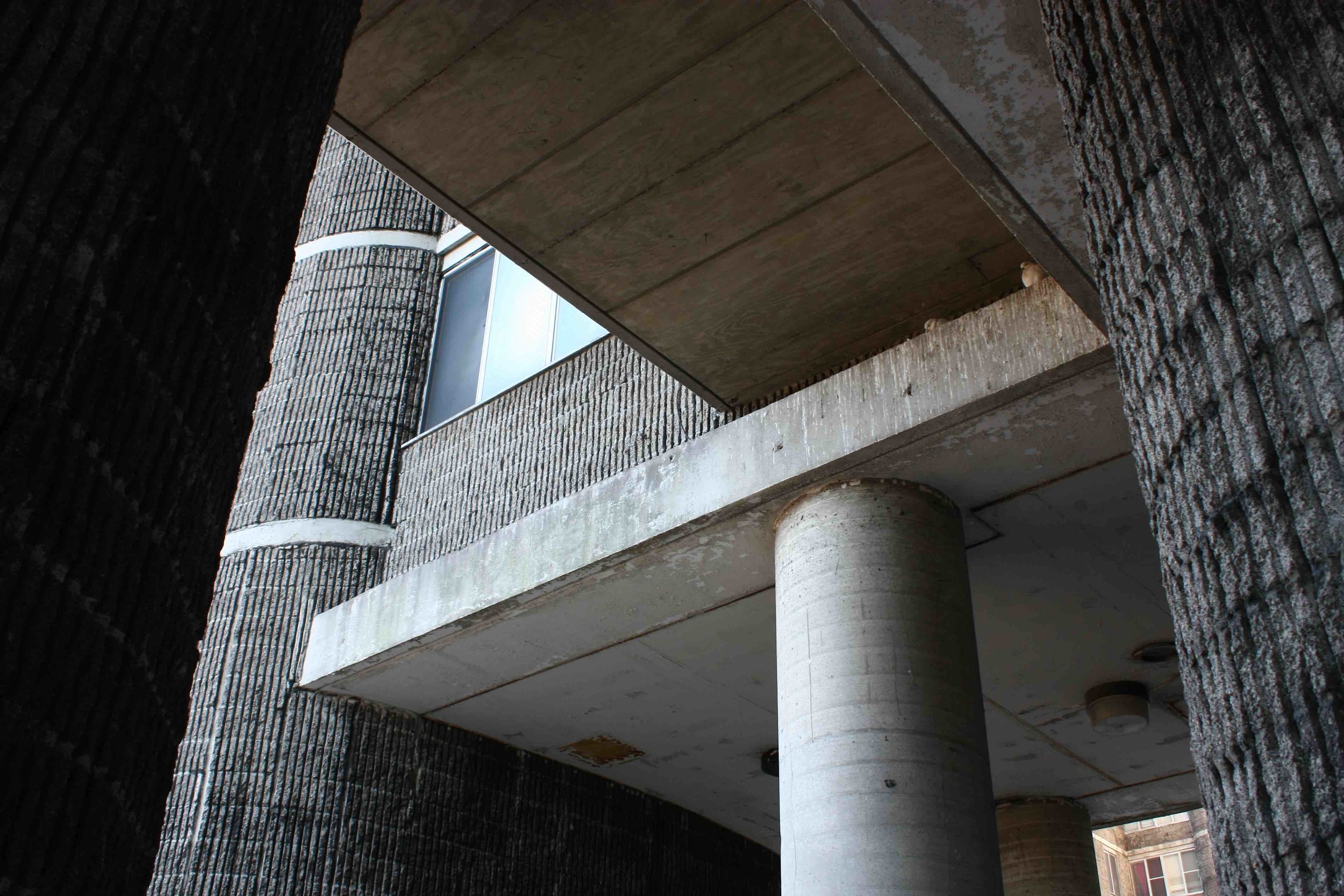

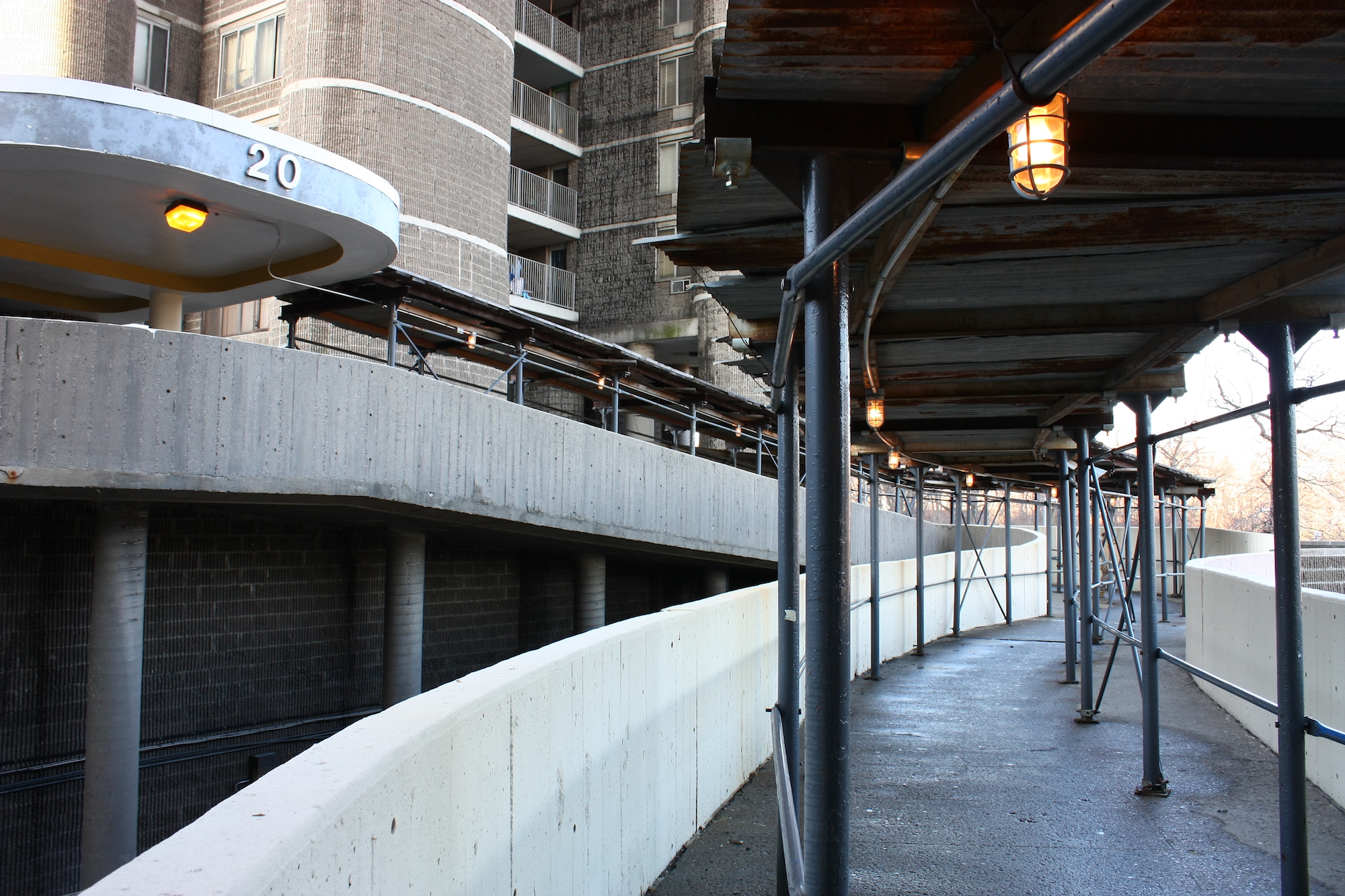
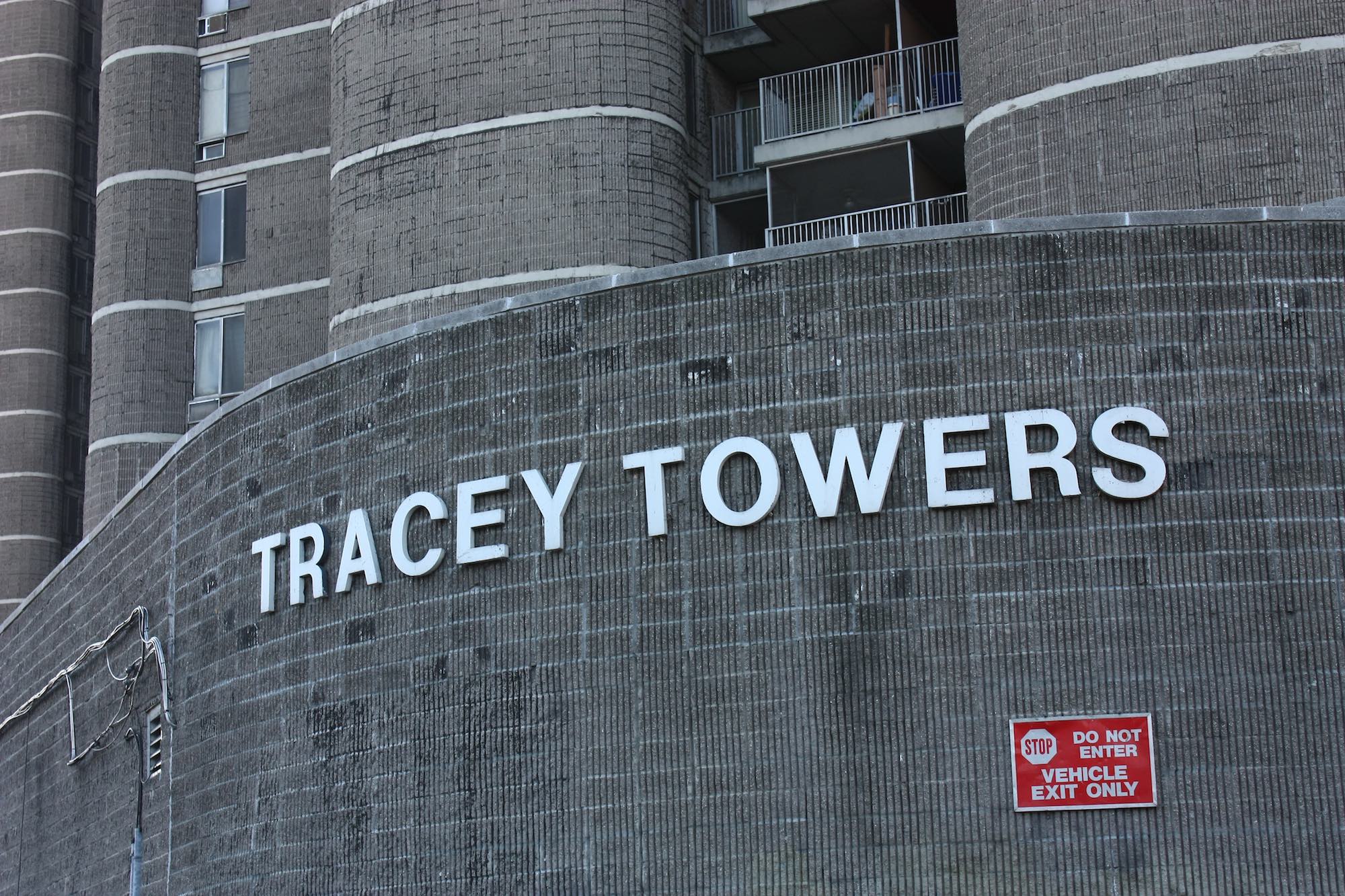
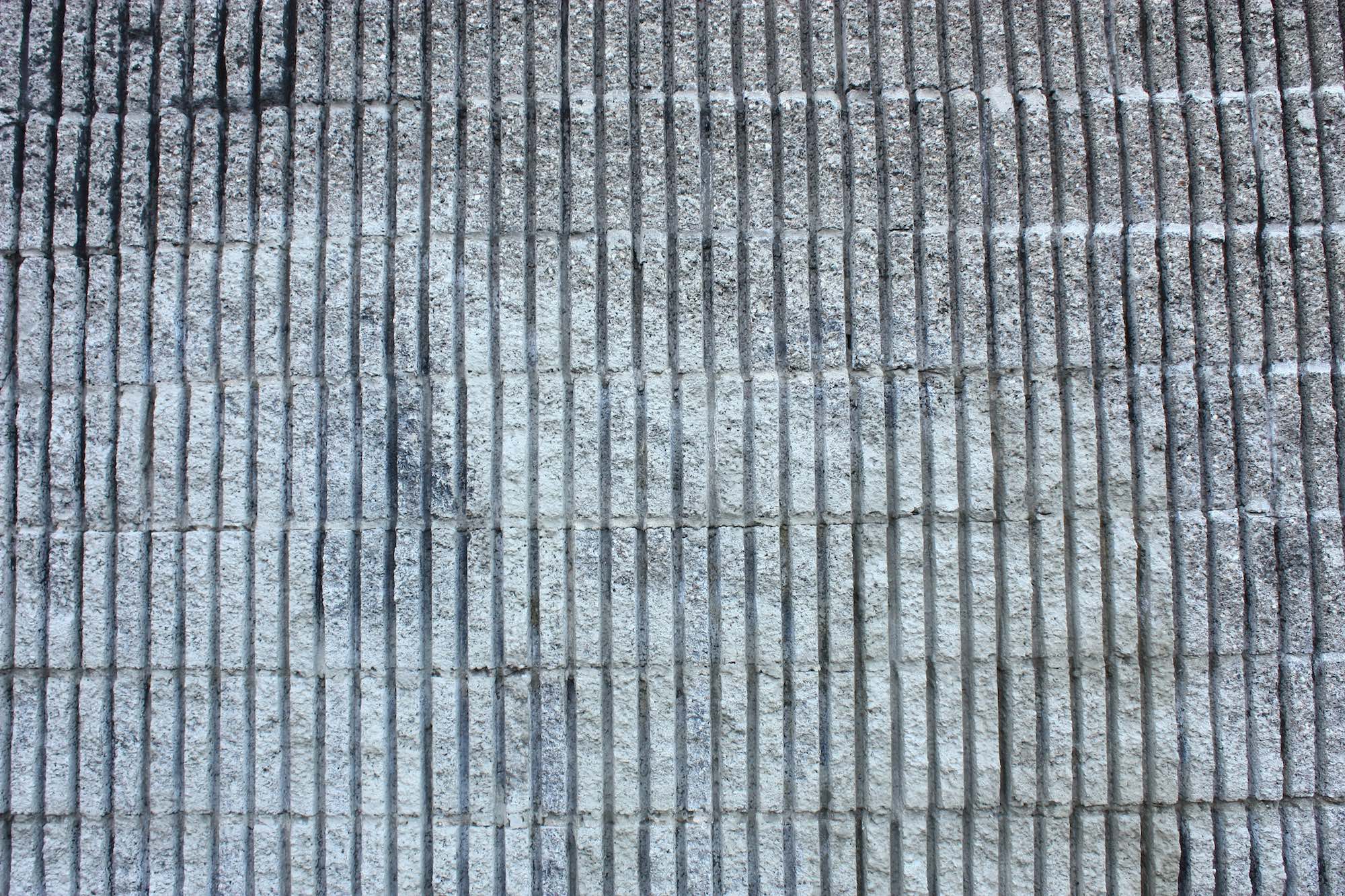
Sources:
Rudolph, Paul; Moholy-Nagy, Sibyl. The Architecture of Paul Rudolph. New York: Praeger, 1970. p. 220.
Wilson, Michael. 3 Hungry Days For Deliveryman Stuck in Elevator. The New York Times, April 6, 2005
Bernstein, Fred. Paul Rudolph's Tracey Towers. Oculus (Journal of the New York AIA chapter), October 2005.

